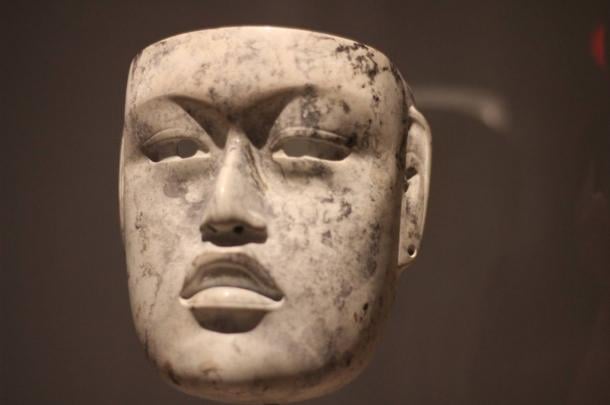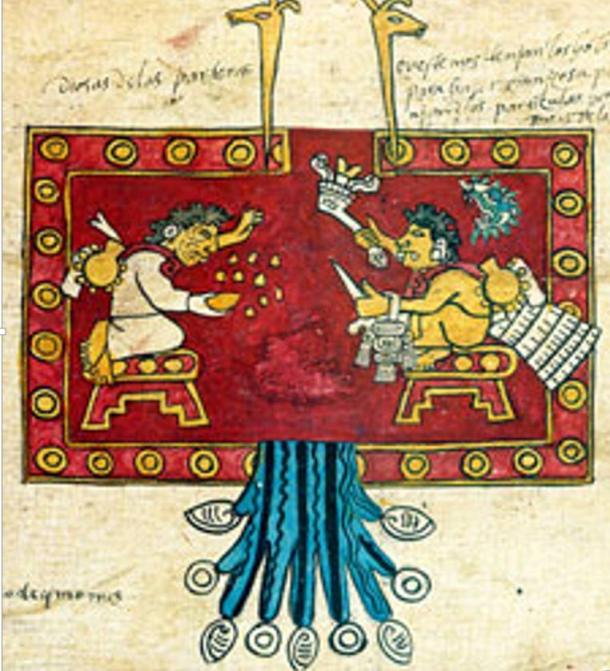The Olmec Maize God - The University of Chicago Press: Journals
www.journals.uchicago.edu/doi/pdfplus/10.1086/RESvn1ms20166943
by K Taube - 1996 - Cited by 70 - Related articles
The Olmec Maize God. The face of corn in Formative Mesoamerica. KARL TAUBE. In both ancient and contemporary Mesoamerica, no other foodstuff has had a ..Ancient Olmec Culture - ThoughtCo
https://www.thoughtco.com › ... › Latin American History › Before Columbus
Mar 6, 2017 - Maize was a staple of the Olmec diet, although it is possible that it was introduced late in the development of their culture. Whenever it was ...Olmec Civilization - Ancient History Encyclopedia
https://www.ancient.eu/Olmec_Civilization/
Olmec prosperity was initially based on exploiting the fertile and well-watered coastal areas of the Gulf of Mexico to grow such crops as corn and beans (often ...http://www.ancient-origins.net/news-history-archaeology/possible-sacred-maize-object-found-stream-olmec-site-002757
10 MARCH, 2015 - 21:51 MARK MILLER
Possible sacred maize object found in stream at Olmec site
Archaeologists have found an artifact made of jadeite at an Olmec site in Mexico that they think represents a cob of corn and that may have been offered to the gods. Corn was a vitally important crop in ancient Mexican and other parts of the Americas, and ancient natives told stories across its broad range.

Archaeologists found a jadeite object possibly in the shape of a corn cob at an ancient Olmec site in the Mexican state of Veracruz. (Photo by Professor Carl Wendt)
Philip Coppens, who writes and speaks on ancient cultures, wrote an article about the importance of maize in pre-Columbian Mexico: “In a 1982 exhibition, the Mexican National Museum of Culture claimed that maize was ‘not domesticated, but created.’ Indeed, maize is accepted as Man’s first, and perhaps his greatest, feat of genetic engineering. So much so, that it is even said to be a gift from the gods. Despite decades of research, there is no known wild ancestor; there is no known way to evolve a non-shattering variant; it is known that maize does not have a method to propagate itself – and thus relies on humans to survive as a species.”
Coppens said people in Mexico were domesticating corn nearly 5,500 years ago as evidenced by archaeological remains of early maize ears found at Guila Naquitz Cave in the Oaxaca Valley, dating back to around 3450 BC.
MORE
- The mysterious civilization of the Olmecs
- The Stone Head of Guatemala that History Wants to Forget
- The Lost City of Aztlan – Legendary Homeland of the Aztecs
A diver at the site Arroyo Pesquero in Veracruz State found the jadeite object in a stream. He was working with archaeologists, including Carl Wendt of California State University-Fullerton, who said it may have been the tip of a staff and a symbol of authority. Then, perhaps Olmec people placed it in the stream as an offering to the gods. The time frame would have been 900 to 400 B.C.

An Olmec mask from the same site where the corn cob-like object was found. This mask dates between 900 and 500 BC. (Adrienlenoir photo/ Wikimedia Commons )
Wendt and other scholars on the team published a paper in the journal Ancient Mesoamericaabout the find. “While having practical importance today as a spot to collect fresh water, in Olmec times, the confluence would also have been important for symbolic and cosmological reasons, and an ideal place for a ritual hoard or votive offerings,” they wrote. “Freshwater, so critical to daily life, was relatively scarce in a region of stagnant swamps. It is no wonder that springs and other freshwater sources were sacred places, and sacrificing [objects] at them was an important part of Olmec ritual.”
From the Great Lakes of the U.S. Upper Midwest and southern Canada to Central America, natives told stories about how the gods gave corn to the people.
The Aztecs, who came later and were farther north in Mexico than the Olmecs, had a story about how the gods bestowed corn on the weak, hungry people they’d created. From the article The Discovery of Corn at the website Aztecs at Mexico Lore, which summarizes the ancient story “The Legend of the Suns”:
In the paradise of Tamoanchan, the gods looked at the newly formed, but weak, humans and said to each other, ‘What shall the humans eat? Everyone must look for food for them.’ The red ant brought forth some corn kernels from within the Mountain of Our Sustenance, also known as Tonacatépetl. It offered the corn to the humans and Quetzalcóatl saw this. He asked ‘Where did you get it?’ The ant did not want to say and refused to do so for a long time. Nevertheless, it eventually succumbed to pressure and told Quetzalcóatl that Tonacatépetl contained the corn. Quetzalcóatl then became a black ant and went inside this hill, Mountain of Our Sustenance. He collected some corn and returned to Tamoanchan where the gods chewed on it immediately.
The paste from the chewed corn was then placed on the lips of the humans and they began to stir and become stronger.

The gods Oxomoco and Cipactonal throw lots with grains of corn, Codex Borbonicus ( Mexico Lore )
Another type of corn story comes from the Ojibwa people of southern Canada and the northern United States in the Great Lakes Region. From an article at the online Columbia Undergraduate Journal of Art History :
The book Nanabush and the Mandomin presents Ojibwa children with a brave and compassionate hero that they can identify with. In this adventure, Nanabush, after speaking with his grandmother Nokomis, sets out to meet a brave warrior named Mandomin that his grandmother foresaw in a vision. The purpose of his quest was to help his people in a great way. In order to fulfill this task, Nanabush must wrestle with the great warrior spirit for three days. Nanabush finally defeats Mandomin, after which Mandomin instructs Nanabush not to allow weeds to grow on his grave. Nanabush tends the grave and after a few days a wondrous plant began to grow which would come to be known as sweet corn, a substance to feed the Ojibwa people.
Olmec Writing: The oldest in the Western Hemisphere | JYI – The ...
www.jyi.org/issue/olmec-writing-the-oldest-in-the-western-hemisphere/
Olmec Writing: The oldest in the Western Hemisphere. by: Doshi Ojus Date: February 2007. Insect, dart tip,corn, corn, throne, beetle, shucked corn. Vertical fish ...Lightning Celts and Corn Fetishes: the Formative Olmec and the ...
www.academia.edu/.../Lightning_Celts_and_Corn_Fetishes_the_Formative_Olmec_an...
STUDIES IN THE HISTORY OF ART .58- Center for Advanced Study in the Visual Arts Symposium Papers XXXV Olmec Art and Archaeology in Mesoamerica ...
No comments:
Post a Comment